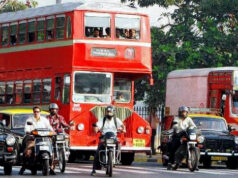Some of the most important questions that economic scientists should answer are the questions starting with “What If”. Should we be content with the GDP growth rate (keeping the questionable effectiveness of GDP growth rate as a measure of economic growth and rising standard of living aside) of 8%-9%, especially when most of the world economies are still recovering from the economic crisis that began in 2008? What if the government (institutional) inefficiencies and the waste of resources were minimized? What if the man-made inflation (yes, the current double-digit inflation is not the handicraft of Rain God, or any other God for that matter) were within the so called ‘acceptable’ limits? What if the prices of almost all items including money (interest rates) were not controlled or regulated? To put it simply, what if the markets were freer?
Shouldn’t we be celebrating a much higher rate of growth (say 20% or more) if these restrictions and obstacles were removed?
A number of commentators and academicians in the mainstream media have hailed and attributed India’s relative immunity to the Global Financial Crisis in 2008 to its unopened financial markets. Prabhat Patnaik, one of the prominent economists of India, who was also appointed to a four-member team of the UN to recommend reforms to the global financial system after the crisis hit, commented the following in a recent interview,
“India has been immune to East Asia-type financial crises, and has escaped the current crisis precisely because its financial sector has not been opened up. (Its banking sector, having only 7 per cent foreign assets, was not troubled by “toxic securities”.) But this immunity will go if it ‘opens up’.”
I am not disputing his claim. It is of course true that India suffered little because its financial markets were not open. However, if you think a little deeper, you will clearly see that the opportunity cost of not opening the financial markets has been huge. What we have lost in terms of forgone growth and development in the last more than 60 years due to inadequate capital and innovations is almost impossible to calculate. There is a difference between a repressed financial system (with heavy and absurd regulations) and an open financial system. The crisis in USA was caused not because it was open, but because it was regulated on the back of populist policies (hair-brained ideas like Community Reinvestment Act, and acts of government enterprises like Fannie Mae and Freddie Mac, etc.) of awarding free lunch (or at least a subsidized lunch, but we can leave the details of cause and effect for another post).
His argument makes little sense if you take it to its logical conclusion. That ways, the economy will be completely insulated from outside influence and disturbances had it been a closed economy, and maybe a primitive one with barter exchange. Then we can relish with the knowledge that our economy can never plunge into a crisis. Of course then there will be problems of micro management (arising from the issues of indivisibility and the double coincidence of wants), but at least you won’t have recurring cycles of boom and bust, i.e., freedom from macroeconomic crisis. We are just tired of that, right?
And what’s the use of opening the economy anyway (Swadeshi Apnao!!!)? Who needs aircrafts to travel long distances in short time (aircrafts are not made in India)? Who needs cutting edge technology to do the huge complex problems? Who needs the latest inventions in medicine to save lives? And all that follows.
Post Disclaimer
The opinions expressed in this essay are those of the authors. They do not purport to reflect the opinions or views of CCS.





